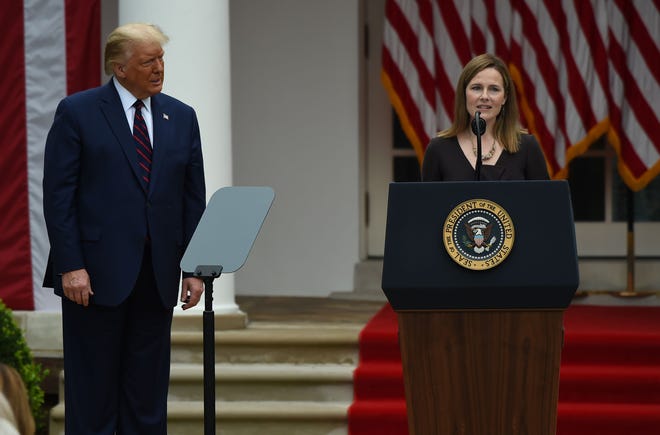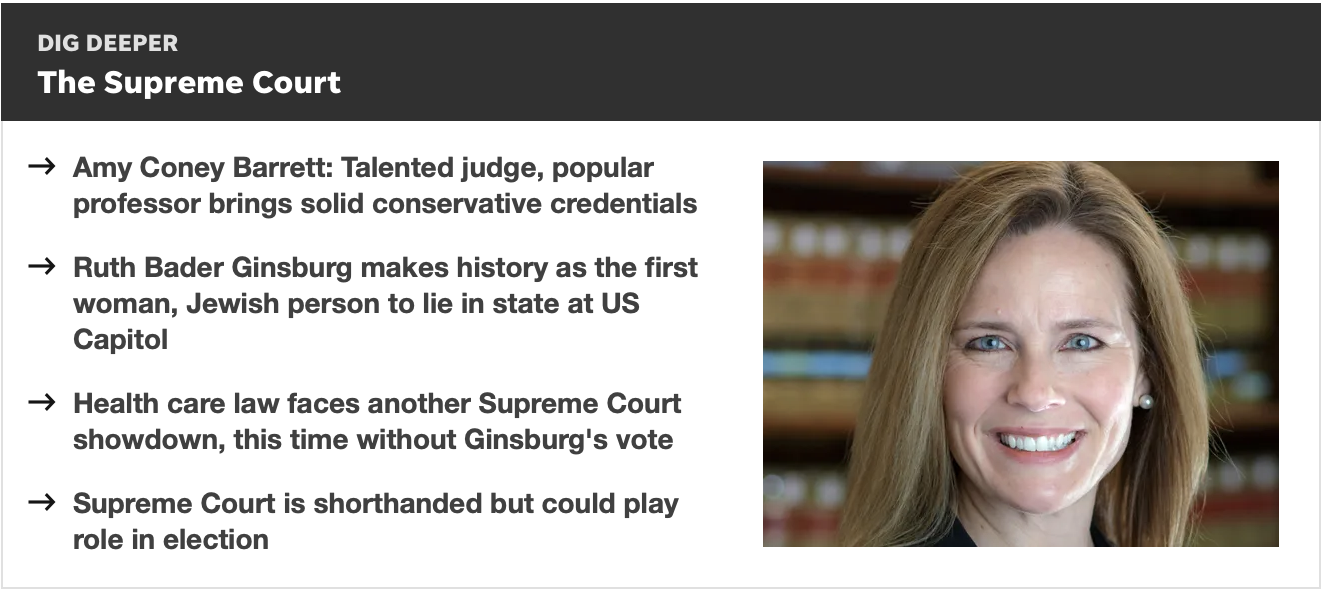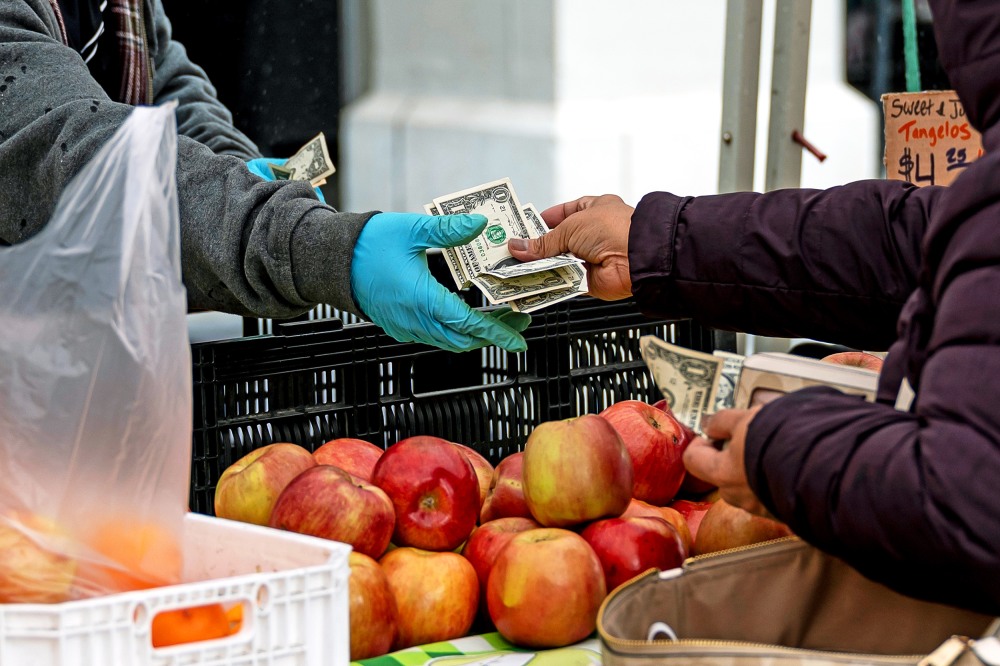
This article is more than
5 year oldSix conservative justices? 10 ways the Supreme Court could change
WASHINGTON – If President Donald Trump and Senate Republicans succeed in putting federal appeals court Judge Amy Coney Barrett on the Supreme Court, it will mark the biggest change there since 1991.
It was then that Associate Justice Thurgood Marshall, a liberal giant of the civil rights movement, retired in failing health and was replaced by Associate Justice Clarence Thomas, who has become the most conservative member of the court.
Twice more since then, personnel changes moved the court to the right: in 2006, when Associate Justice Samuel Alito took over for Associate Justice Sandra Day O'Connor, and 2018, when Associate Justice Brett Kavanaugh succeeded Associate Justice Anthony Kennedy. But O'Connor and Kennedy were moderates named by Republican presidents, so the difference was not as dramatic.
Goodbye, RBG:'Superhero' Ginsburg returns to Supreme Court for final time
Here are 10 ways the high court could be altered if Barrett replaces Associate Justice Ruth Bader Ginsburg, the leader of the court's liberal wing and a women's rights pioneer:
• Abortion: Ginsburg was a firm supporter of reproductive rights, voting most recently to block laws in Texas and Louisiana that would have imposed restrictions on abortion clinics, forcing many to close. Barrett's most vocal proponents are in the anti-abortion movement; in one case, she would have allowed Indiana to try again to win court approval of a law banning abortions based on sex, gender or disability.
• Health care: The Affordable Care Act twice has been upheld by the Supreme Court, thanks mostly to Chief Justice John Roberts siding with the liberal wing. A third major case will be heard in November. Barrett has criticized Roberts' opinion concluding that the law is constitutional because its penalty for not purchasing insurance – since reduced to zero – can be categorized as a tax.
• Guns: The Supreme Court has not expanded the right to keep guns at home for self-defense since its landmark rulings in 2008 and 2010, most recently jettisoning a New York City case and refusing to hear several others. Barrett dissented when the U.S. Court of Appeals for the 7th Circuit restricted the Second Amendment rights of a non-violent felon.
• Religious liberty: The high court already looks favorably on religious liberty claims, but Barrett's confirmation might make it a lock. The court last term said states may not discriminate against religious schools in scholarship programs open to private school students and let employers with religious objections sidestep rules designed to provide insurance coverage for contraceptives. Next term they will hear a case about a Catholic social services agency that refuses to place foster children with same-sex couples.

• LGBTQ rights: The Supreme Court ruled in June that gay, lesbian and transgender workers are covered under a federal employment law that prohibits sex discrimination, with Associate Justice Neil Gorsuch writing the majority opinion. Barrett has spoken and written about her personal belief that marriage is between a man and a woman, though she said it would not influence her rulings from the bench.
• Chief Justice John Roberts: The Roberts Court since 2005 has been one in which the chief justice played a vastly influential role. For the past two years since Kennedy's retirement, he has also been the swing vote. A court with six conservatives would deprive Roberts of that role and strengthen the hand of the court's most conservative justices, such as Thomas and Associate Justice Samuel Alito.

• Justices Kavanaugh and Gorsuch: Would Trump's first two nominees be the new swing votes? Kavanaugh has sided with Roberts more than any other justice and takes the consequences of potential court rulings into consideration. Gorsuch has a libertarian streak that places him with the liberal wing on occasion; he wrote the court's decision last term extending a federal employment protection law to LGBTQ workers.
• The liberal wing: Ginsburg was the senior member of the liberal wing since 2010, when Associate Justice John Paul Stevens retired. A 6-3 court would give that role to Associate Justice Stephen Breyer, who at 82 also is the oldest justice. But Associate Justice Elena Kagan, President Barack Obama's second nominee, is viewed as a strategic thinker and bridge-builder who could play an outsize role.

• Public opinion: In recent years, the Supreme Court has been the most popular branch of the federal government. In a poll last week by Marquette Law School, 59% said they trusted the court the most among the three branches, compared to 24% for the presidency and 16% for Congress. A deeply partisan confirmation battle that could turn a key seat from liberal to conservative on the eve of an election is bound to change that.
• Structural changes: In the never-ending partisan war over judicial nominations, both Democrats and Republicans have changed the rules when they were in power. If Republicans muscle through the current battle and win a 6-3 majority but lose the White House and Senate, Democrats could seek to add more justices to the high court, impose term limits, or further limit Senate minority rights.
Fitting firsts:Ginsburg makes history as the first woman, Jewish person to lie in state at US Capitol




